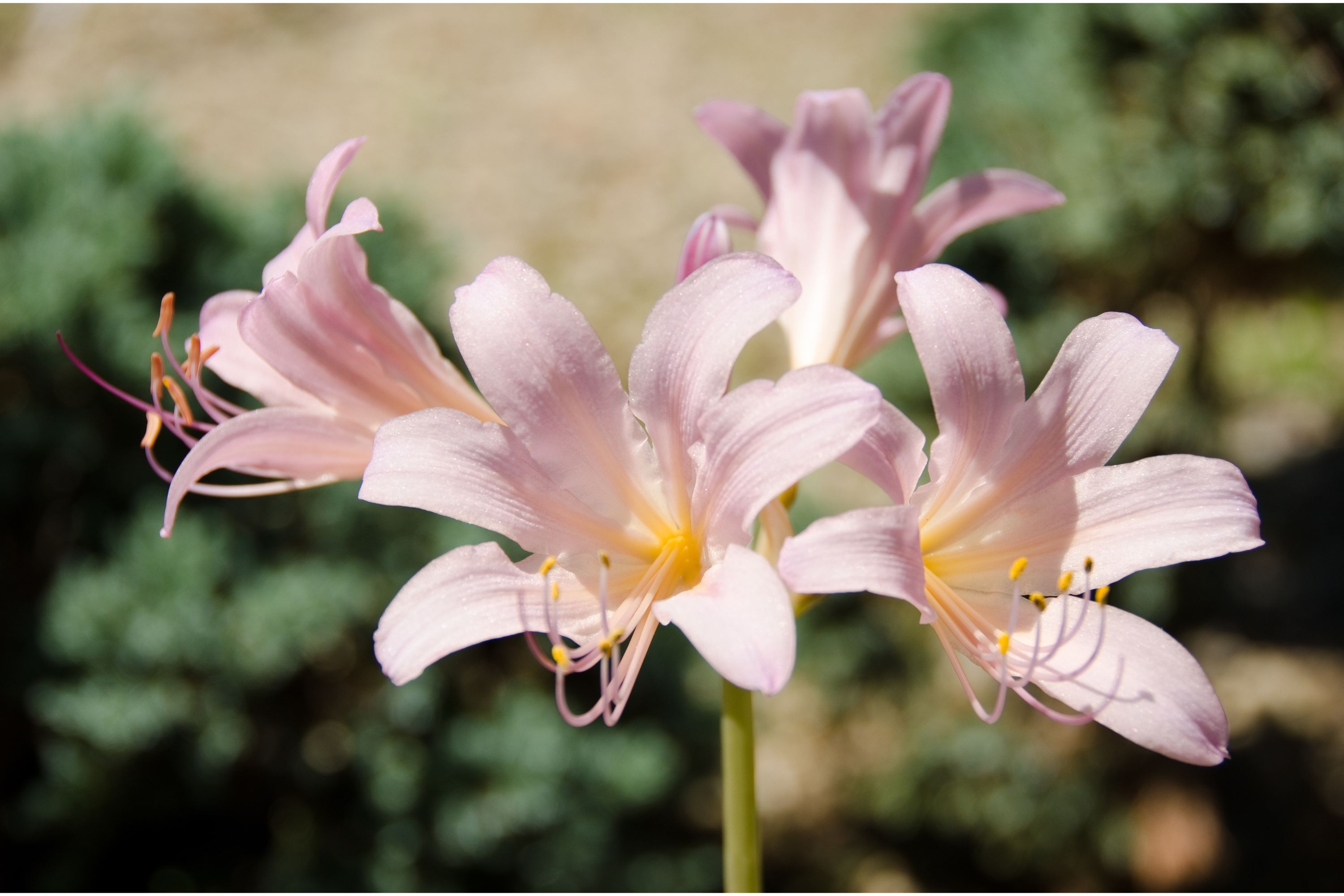Magic lily
(Lycoris squamigera)

Description
Lycoris squamigera, also known as the magic lily or surprise lily, is a plant species belonging to the Amaryllidaceae family. This plant is native to China, Japan, and Korea but has become popular in many parts of the world for its attractive flowers and unique blooming pattern. In this article, we will delve into the taxonomy, morphology, ecology, and cultivation of Lycoris squamigera. Taxonomy Lycoris squamigera was first described by the French botanist Charles Louis L'Héritier de Brutelle in 1788. The genus name Lycoris is derived from the Greek word lycos, meaning wolf, and oris, meaning mouth. The species name squamigera comes from the Latin word squama, meaning scale, and gero, meaning to carry, referring to the scales on the stem. Morphology Lycoris squamigera is a herbaceous perennial that grows from bulbs. The plant can grow up to 45 cm in height and 20 cm in width. The leaves are strap-shaped, about 50 cm long and 1 cm wide, and emerge in the fall after the flowers have bloomed. The flowers are borne on leafless stalks, or scapes, that can reach up to 60 cm in height. Each scape produces up to six funnel-shaped flowers that are 7-10 cm long and 10-15 cm wide. The flowers are usually white or pink with a yellow stripe down the center of each petal. The stamens and pistil are exserted from the flowers, giving them a spider-like appearance. Ecology Lycoris squamigera is a summer-dormant species, which means that the bulbs lie dormant in the soil during the summer months and sprout in the fall after the first autumn rains. The plants are adapted to a wide range of soil types and can tolerate both sun and shade. They are also deer-resistant and can withstand drought and heat. Lycoris squamigera is pollinated by a wide range of insects, including bees, butterflies, and moths. Cultivation Lycoris squamigera is a relatively easy plant to grow and is suitable for both novice and experienced gardeners. The bulbs should be planted in the fall, preferably in well-drained soil with a neutral to slightly acidic pH. The planting depth should be about 10 cm, and the bulbs should be spaced about 15 cm apart. The plants prefer partial shade but can tolerate full sun if the soil is kept moist. Watering should be reduced in the summer when the bulbs are dormant. Lycoris squamigera is propagated by dividing the bulbs in the fall after the foliage has died back. The bulbs can be divided into smaller clumps and replanted immediately. It may take a few years for the plants to establish themselves and produce flowers, but once they do, they will bloom reliably year after year. Uses Lycoris squamigera is mainly grown for its ornamental value. The plant's unique blooming pattern, where the flowers appear without any foliage, makes it an excellent addition to any garden. The flowers are also popular in floral arrangements and can last up to a week when cut. In traditional Chinese medicine, the bulbs of Lycoris squamigera are used to treat various ailments, including headaches, high blood pressure, and inflammation. Conclusion Lycoris squamigera is a beautiful and unique plant that is well-suited for gardens and landscapes. Its summer dormancy, attractive flowers, and adaptability to various growing conditions make it an excellent choice for novice and experienced gardeners alike.
Taxonomic tree:







